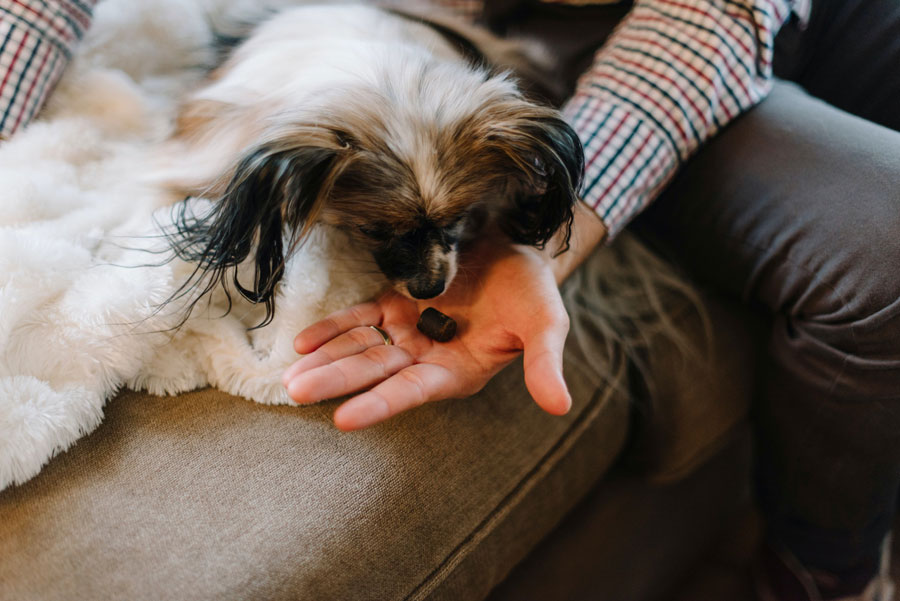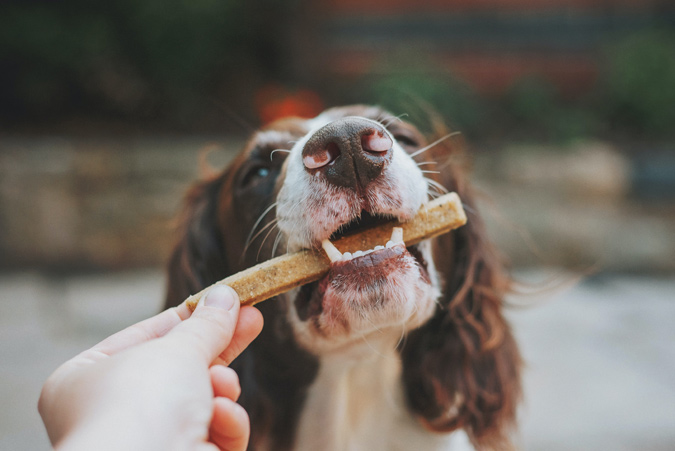Seeing a pet’s eyes light up when you give them a treat can make you feel warm and fuzzy inside, but how many pet treats are too many?
Without a doubt, pet treats can play a useful role in positive reinforcement training but many of us (pet professionals and pet owners alike) tend to give treats as an expression of love or affection.
Understanding the best way to use treats, what foods make appropriate treats and when to give them can be really useful.
Using pet treats effectively
There are myriad reasons why it might be useful or beneficial to give a dog or cat a pet treat. However, there are also times when a treat might not be the best option. It is important to recognise how and when to use treats.
Certainly, treats can be used to reinforce good behaviour, they can be used during training sessions and as a distraction cue. For example, when a dog is anxious.
Even when using treats at an appropriate time, it’s essential to consider a few things:
- How many pet treats are you giving?
- What type of pet treat are you using?
- Are the treats affecting, or likely to affect your pet’s weight or health?
What pet treats to give and how many
Choose healthy pet treats and make sure they’re actually suitable for pets. While we humans might consider chocolate a treat, it’s not at all suitable for pets and may even make them sick. Dental sticks, on the other hand, make for great treats, as dogs love them but they’re beneficial for the health of their teeth too. Bonus!
When feeding pets treats, the RSPCA advises to use:
- A small portion of commercial dog food; or
- An appropriate and safe morsel of human food; or
- Home-made treats prepared under veterinary advice
If using commercial treats, check the ingredients and, ideally, opt for Australian-made products.
The general rule is that treats used during training should be no more than 10% of a dog’s daily food intake.
- Small (4kg) dog = no more than 18 calories/day from treats
- Medium (15kg) dog = no more than 51 calories/day from treats
- Large (25kg) dog = no more than 81 calories/day from treats
- Extra large (35kg) dog = no more than 110 calories/day from treats
The problem is, aside from the fact is can be difficult to work out your pet’s recommended total calorie intake for the day, some pet treats don’t say how many calories they contain. In this case, it might just come down to using common sense and keeping a close eye on the number of treats you’re handing out.

How to give a dog treats
Believe it or not, there’s a right way and a wrong way to give a dog treats. Give a pet treats the wrong way and not only might you lose a finger, but you may also be reinforcing bad behaviour.
A few simple changes to the way you dole out pet treats could may a positive difference. Here are a few tips when giving out pet treats.
Don’t hold the pet treats up too high. This encourages pets to jump up, which can reinforce the action making it hard to stop your dog from jumping up to greet people.
Don’t wave the treats around. This causes excitement and the dog may quickly snap his teeth to get the treat; in doing so he may also nip your finger. Ouch!
So, how should you give a pet treats? Put the treat on a flat hand or in between your thumb and forefinger and hold it either under the dog’s mouth or at his chest level. This way the dog can take the treat easily, without jumping or racing to grab it.
Recognising that treats make a great reward but need to be used with care and caution is paramount. Being careful and mindful when giving pet treats will also help prevent your pet from becoming overweight or unhealthy.
Latest posts by Liz Walden (see all)
- Pet health: Medicinal cannabis for pets - December 27, 2021
- What pet business insurance do I need? - November 17, 2021
- Pet sitters: how to take time off - November 15, 2021










Leave A Comment